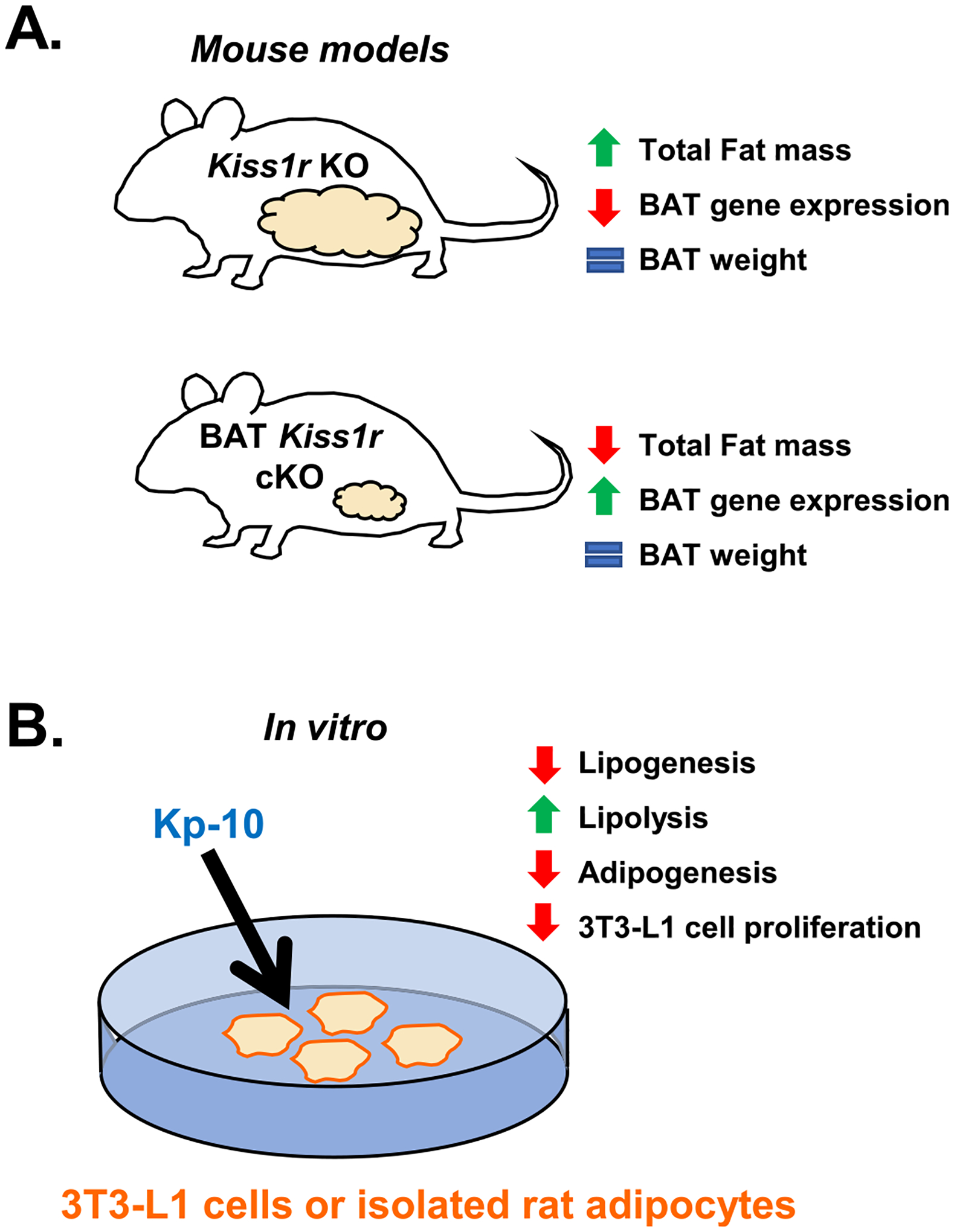Fig. 2.

The effects of kisspeptin signaling on adipose tissue in vivo (A) and in vitro (B). (A) Kiss1r KO females lacking kisspeptin signaling throughout the body display increased fat mass (white adipose tissue) (Tolson et al., 2014; Tolson et al., 2016; Tolson et al., 2019; Velasco et al., 2019) but no difference in BAT weight (Tolson et al., 2020). However, Kiss1r KO females have decreased expression of the BAT genes Prdm16, Cox8b, and Ucp1 (Tolson et al., 2020). In contrast, BAT Kiss1r cKO females have decreased overall fat mass (white adipose tissue) and increased Cox8b expression in BAT, with normal BAT weight (Tolson et al., 2020). (B) Effects of Kp-10 administration in vitro in 3 T3-L1 cells and cultured male rat adipocytes. Kisspeptin decreased lipogenesis, adipogenesis, and 3 T3-L1 cell proliferation while increasing lipolysis, indicating that kisspeptin may inhibit lipid accumulation (Pruszyńska-Oszmałek et al., 2017), and could explain, in part, fat mass accumulation in Kiss1r KO mice lacking endogenous kisspeptin signaling.
